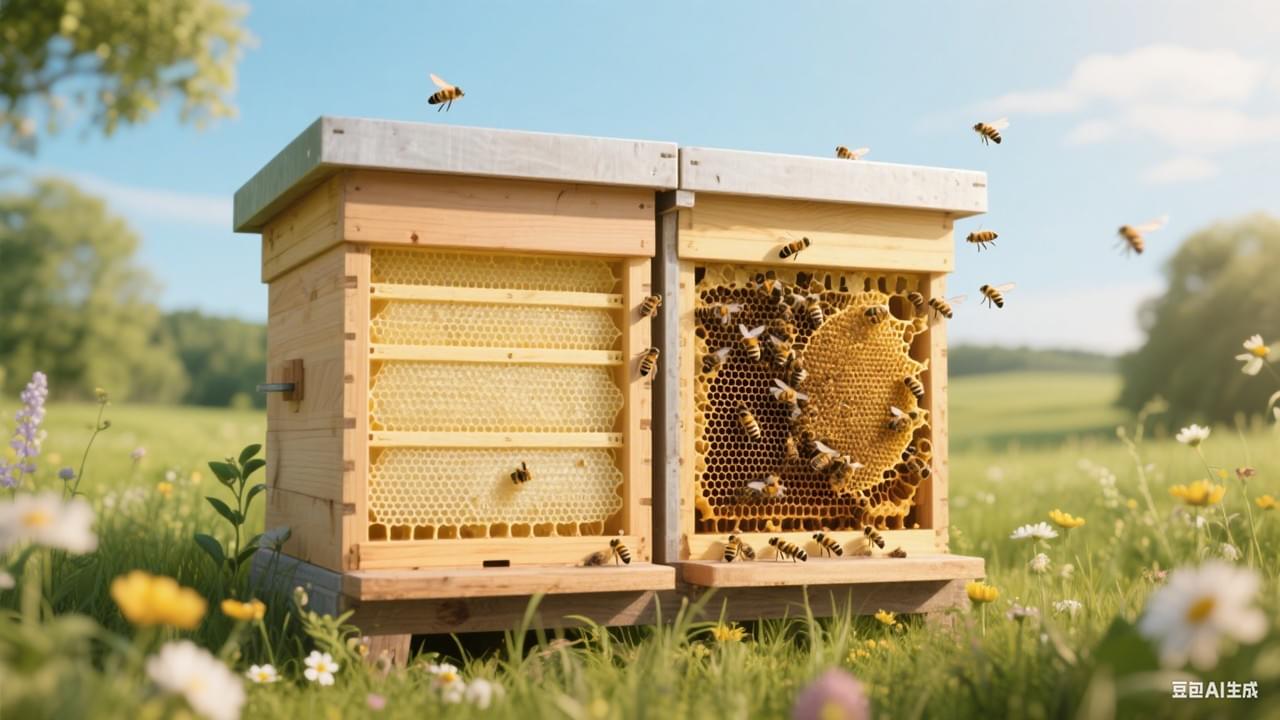When it comes to foundation vs foundationless beekeeping, your choice can make or break your hive’s success. Whether you’re new to the craft or a seasoned beekeeper, selecting the right comb-building method affects everything—from bee health to honey yield. In this post, we’ll break down the 7 key insights you need to choose wisely.
Table of Contents
Toggle1. 🧱 What Is Bee Foundation, and Why Does It Matter?
Foundation vs foundationless beekeeping starts with understanding what a foundation is. Foundations are pre-formed sheets (often made of wax or plastic) placed inside hive frames. They guide bees in building straight, uniform comb.
This structure offers control over comb shape and cell size—important for large-scale wax foundation beekeeping operations. For beginners, it simplifies inspections and honey extraction.
2. 🐝 How Does Foundationless Beekeeping Work?
Unlike traditional setups, natural beekeeping methods skip the use of commercial foundation. Instead, bees draw their own comb directly from the top bars or a starter strip. This method promotes natural behavior and organic wax construction but requires more careful hive management.
Beekeepers who want to reduce chemical exposure or mimic wild hives often choose this foundationless method.
3. 🎯 Foundation Pros: Efficient and Predictable
Let’s look at the top advantages of wax foundation beekeeping:
- Uniform comb: Helps with frame rotation and inspection
- Faster colony build-up: Bees spend less energy drawing comb
- Machine-compatible: Works well with centrifugal extractors
- Mite control: Allows control of cell size to reduce Varroa mite growth
This makes it the best foundation for beehives in commercial or high-yield operations.
4. 🧪 Cons of Using Foundation You Should Know
Though effective, foundations come with trade-offs:
- Chemical residues in commercial wax
- Restricts bees’ natural behavior
- Higher cost and prep time
- Inflexibility for those practicing natural beekeeping methods
If you’re aiming for organic or small-scale production, these may outweigh the benefits.
5. 🌿 Why Some Beekeepers Go Foundationless
Going foundationless supports the bee colony’s instinctual habits:
- Allows custom cell sizes
- No chemical contamination from pre-processed wax
- Supports sustainable, natural beekeeping methods
However, managing cross-comb and fragile structures requires more attention and skill—especially for beginners.
6. 📊 Quick Comparison: Foundation vs Foundationless
| Feature | Foundation Beekeeping | Foundationless Beekeeping |
|---|---|---|
| Comb Shape | Uniform & straight | Natural, varies by hive |
| Bee Behavior | Controlled | Natural |
| Inspection Ease | Easier | Requires more skill |
| Honey Extraction | More efficient | Requires crush-and-strain |
| Chemical-Free | Not always | Yes |
| Cost | Higher upfront | Lower setup cost |
For most beginners, a mix of both can be a practical approach.
7. 🛠️ Choosing What’s Right for You
Still unsure whether foundation vs foundationless beekeeping is the right path? Consider these:
- Do you want more control and faster growth? Go with wax foundation beekeeping.
- Are you committed to natural beekeeping methods and chemical-free practices? Then foundationless may suit you.
- Want the best of both? Try foundation in honey supers and foundationless in brood boxes.
Suppliers like Delee offer both wax and plastic foundations, as well as high-quality frames and starter strips for foundationless systems—making your transition seamless.
💬 Final Thoughts
There’s no one-size-fits-all answer to foundation vs foundationless beekeeping. The best choice depends on your goals, values, and experience level. What’s most important is choosing a method that supports strong colony health and sustainable beekeeping.
With the right tools and techniques—whether foundation or not—you’re building more than comb; you’re shaping the future of your hive.
❓FAQ
Q1: Can I use both methods in one hive?
Yes, but make sure frames are spaced correctly to avoid cross-combing.
Q2: Is foundationless beekeeping harder for beginners?
It can be. Start with a few frames before going fully foundationless.
Q3: What’s the best foundation for beehives?
That depends on your goals—wax for natural appeal, plastic for durability and ease of use.
Q4: Do bees prefer foundation or foundationless?
Bees will build on either, but many prefer drawing natural comb when given the chance.

